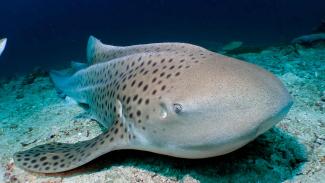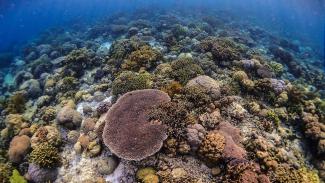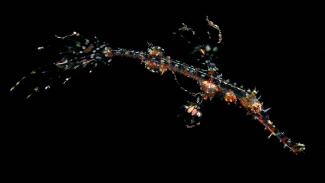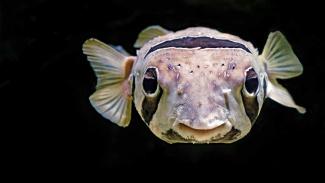Everybody has heard of Nemo, but not many know that this species is a member of the Damselfish family - a large family that includes many of the smaller fish that make up the numbers on Asia's reefs.
Damselfish are one of the most successful tropical fish families. As well as Anemonefish, the family also includes Sergeant Majors, Humbugs, Fork-tailed Chromis and many other commonly encountered species.

Family variety
Behaviour
Despite their small size they can be very aggressive when protecting feeding territory or their nests. They are not scared of attacking much larger fish or even unsuspecting divers.
Reproduction
Diet
Defences
FACTFILE
SPECIES: >300
SIZE RANGE: 5-19 cm
DISTRIBUTION:
Found in all tropical and some temperate waters worldwide.
HABITAT:
Reef dwelling. Anemonefish live their whole lives within the protection of their host anemone.
THREATS:
Destruction of habitat.
Identification tips
-
Damselfish are generally small fish, growing to no more than 20cm long
-
Single continuous dorsal fin.
-
Forked, lunate or rounded tails, depending on species.
-
Often large, very visible scales in relation to body size..
-
Most common colourations within this large family are black, white, yellow and blue.
-
Characterised by large prominent mouths.
-
Thin flattened bodies with a round or oval side view.
Popular species
Look out for these species of damselfish on your next dive.
Western Clownfish
(Amphiprion ocellaris)
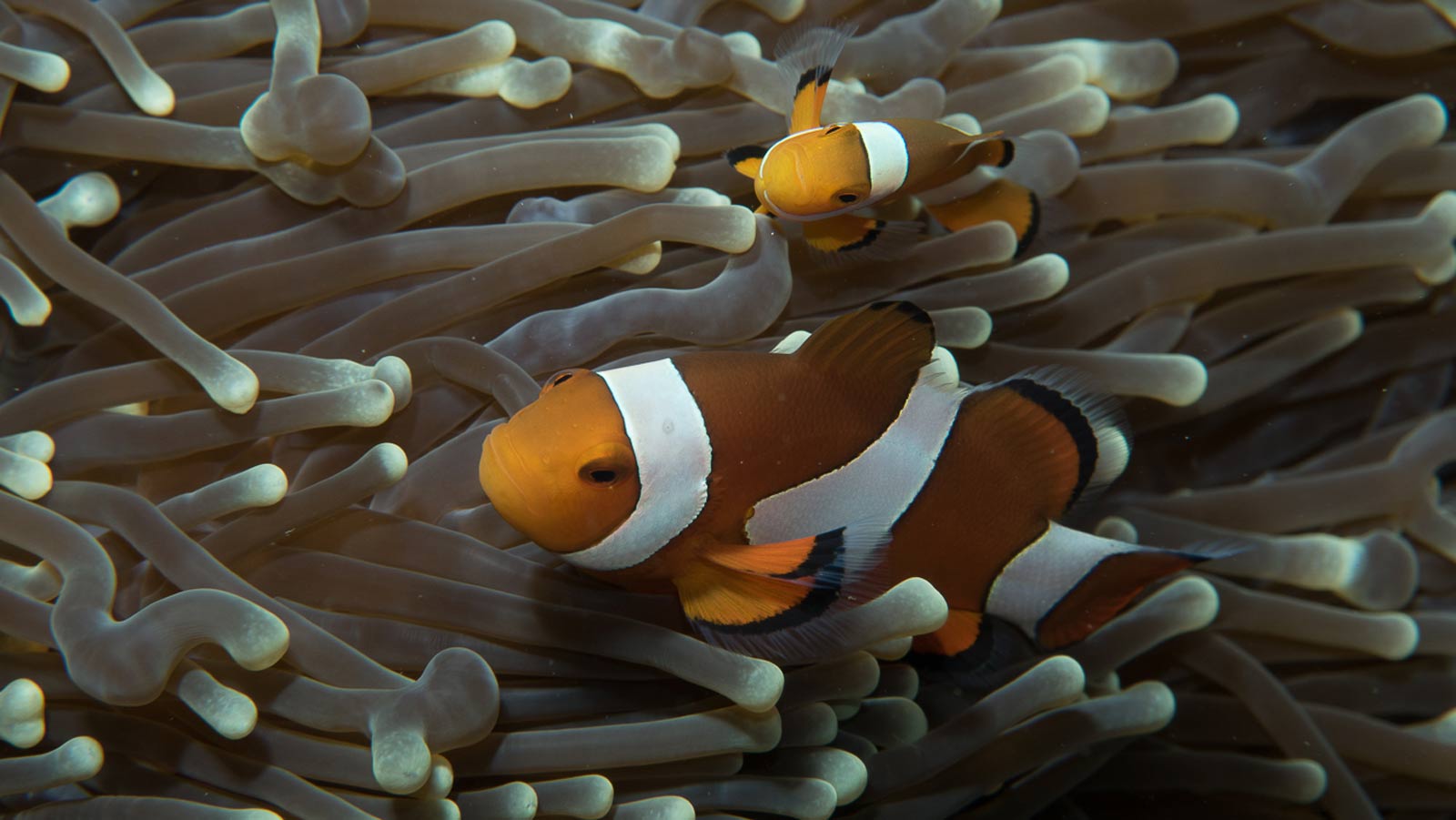
Made famous as the star of 'Finding Nemo', these little orange and white fish spend their time dancing among the tentacles of their host anemone.
Sergeant Major
(Abudefduf vaigiensis)
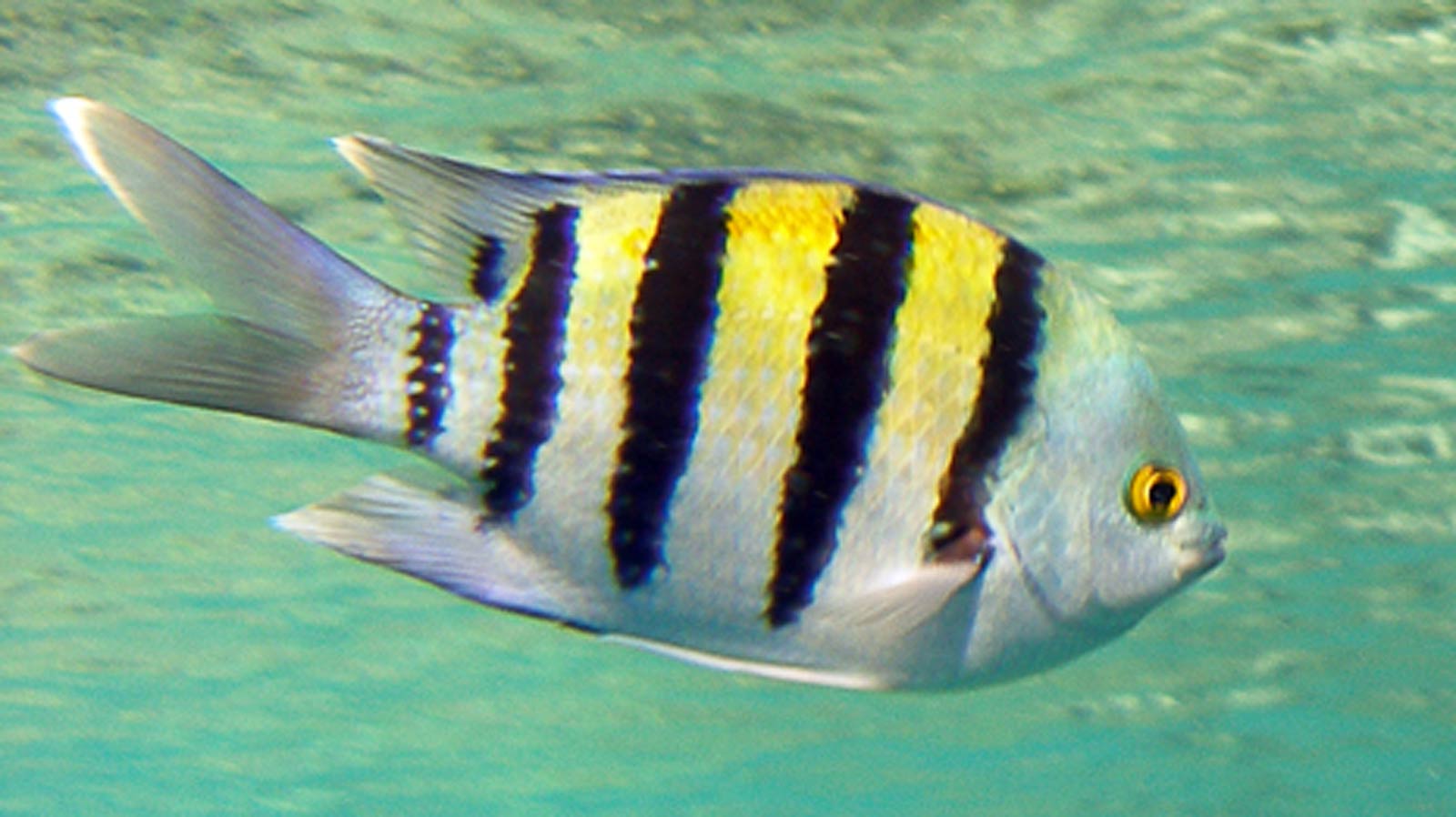
Often found in large numbers on reefs throughout the region, they school in open shallow water well above the reef, filtering the water for tasty plankton.
Clark's Anemonefish
(Amphiprion clarkii)
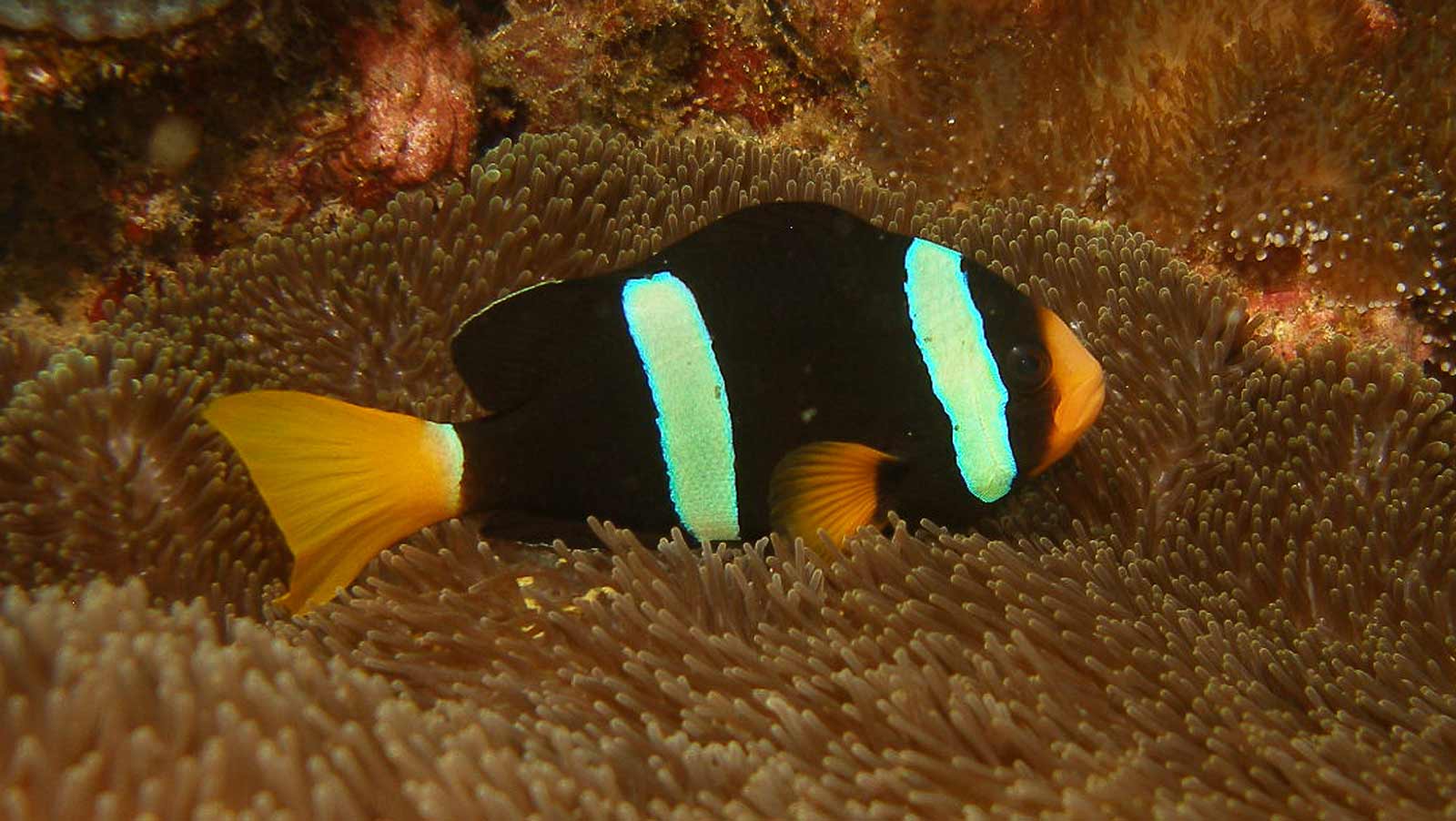
One of the larger anemonefish species, can be very aggressive for their size. They show little fear of larger fish or divers and will protect their territory courageously.



